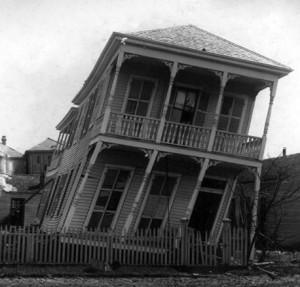I have had the pleasure (or displeasure!) over the last several years of conducting a weekly audit review of a number of client websites and have noticed a common pattern of on-site mistakes that seem to plague all of them from time to time. If you built a new home you wouldn’t accept mistakes in construction, so when building your website for your business make certain that your construction avoids these common mistakes.
- Server Errors: A webserver that routinely returns errors or timeouts will be dropped in rankings by search engines. SEO Tools provides a free online tool for identifying server response errors. Should errors be detected, they should be corrected immediately to improve user experience.
- Broken links: Broken links both inbound and outbound rank #1 and can have the most negative impact on website rankings. A weekly audit with a program such as SEO Profiler or Link Checker can identify broken links that need correction. Remember a good link this week can be a broken link next week so check them regularly.
- Duplicate Content: Duplicate content is a problem that Google will penalize a site for so make sure that you check to see if you have any identified duplicate content. A tool such as Siteliner will help to identify duplicate content issues. Duplicate content should be either removed or changed to avoid possible penalties.
- Missing Meta Descriptions: Although meta descriptions do not have a measurable effect on website rankings, they do influence whether someone searching clicks on your results. Remember that this is the text that appears with your search results so ensure that it entices the reader to click on your site. Also ensure that each page has a meta description that is unique to the content on the page.
- Image Problems: A common issue with websites is the failure to handle important image problems. The first of these is not optimizing image size. Images routinely are the largest files on pages and not optimizing their size slows down load speed, a factor Google considers high in their ranking of a website. PNG images are normally a smaller sized file that GIF or JPEG images and should be used where possible. The second issue is failure to add alt tags to the images. Adding alt tags serves two purposes: it provides information to readers that do not have images displayed and since search engine spiders cannot read images, adding alt tag provides them with additional information on the page content. The last problem is the failure to specify image height and width. Specifying the height and width in the coding allows the image to load faster and cut down on page load speed.
Although each of the above errors may be considered by many to have a low impact on a websites overall ranking, they are an indication of a poorly maintained site and one that can provide a poor user experience. That alone can have a negative impact on search engine rankings. Make sure that your site does not contain these mistakes when built or fall prey to them over time by conducted regularly scheduled audits. Although I have mentions some tools that are available, conduct your own evaluation of tools, both paid and free and utilize the ones that fit your needs.

